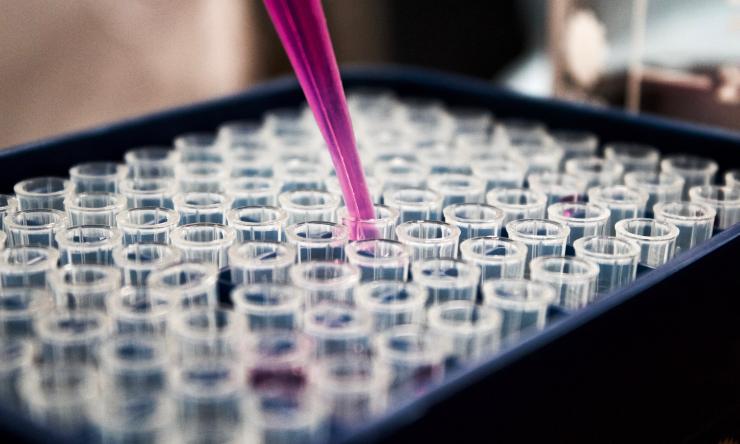Unraveling the complexity of vitamin B12 diseases
A team of researchers at Baylor College of Medicine and collaborating institutions has shed new light into the complexity of vitamin B12 diseases. The scientists studied two rare inherited vitamin B12 conditions that affect the same gene but are clinically distinct from the most common genetic vitamin B12 disorder. This work suggested that, in addition to the gene affected in the common vitamin B12 disease, other genes also were affected, making a more complex syndrome. This study searched for those genes and their function.
Working with mouse models, the team found that the genes involved in the more complex forms of the condition not only cause the expected typical vitamin B12 disease but also affect the generation of ribosomes, the protein-building machinery of the cell. The findings, published in the journal Nature Communications, support reevaluating how to treat these patients in the future and have implications for genetic counseling.
“Vitamin B12, or cobalamin, is a dietary nutrient essential for normal human development and health and is found in animal-based foods but not in vegetables. Mutations in the genes encoding the proteins responsible for the metabolic processes involving vitamin B12 result in rare human inborn errors of cobalamin metabolism,” said co-corresponding author Dr. Ross A. Poché, associate professor of molecular physiology and biophysics at Baylor.
Patients with the most common inherited vitamin B12 disease, called cblC, suffer from a multisystem disease that can include intrauterine growth restriction, hydrocephalus (the build-up of fluid in the cavities deep within the brain), severe cognitive impairment, intractable epilepsy, retinal degeneration, anemia and congenital heart malformations. Previous work had shown that mutations in the MMACHC gene cause cblC disease.
It also was known that some patients presenting with a combination of typical and non-typical cblC characteristics do not have mutations in the MMACHC gene, but rather in genes that code for proteins called RONIN (also known as THAP11) and HCFC1. The resulting changes in these proteins lead to reduced MMACHC gene expression and a more complex cblC-like disease.
In this study, Poché and his colleagues looked for other genes that also might be affected by HCFC1 and RONIN gene mutations.
“We developed mouse models carrying the exact same mutations that the patients with cblC-like disease have in HCFC1 or RONIN genes, and recorded the animals’ characteristics,” Poché said. “We confirmed that they presented with the cobalamin syndrome as expected, but in addition we found that they had ribosome defects. This is the first time that the HCFC1 and RONIN genes have been identified as regulators of ribosome biogenesis during development.”
The researchers demonstrate that this cblC-like disease affecting the function of RONIN and HCFC1 proteins is a hybrid syndrome as it is both a cobalamin disorder and a disease of ribosomes, or a ribosomopathy.
The findings have potential therapeutic implications. “Some cblC-like patients may respond to some extent to cobalamin supplementation, but we anticipate that will not help the issues due to ribosome defects,” said Poché, member of the Dan L Duncan Comprehensive Cancer Center.
One step toward designing effective ribosomopathy therapies is to better understand what the defects in the ribosomes are. “We plan to functionally characterize the altered ribosomes at the molecular level to identify how their function is disrupted,” Poché said.
“There are many exciting aspects of this study, from the clinical implications to the basic science. The beauty is in how the work in patients is symbiotic with the work in the mouse model and how each system informs the other,” said co-author Dr. David S. Rosenblatt, professor in the departments of human genetics, medicine, pediatrics, and biology at McGill University and senior scientist at the Research Institute of the McGill University Health Centre.
Other contributors to this work include co-first authors Tiffany Chern and Annita Achilleos, Xuefei Tong, Matthew C. Hill, Alexander B. Saltzman, Lucas C. Reineke, Arindam Chaudhury, Swapan K. Dasgupta, Yushi Redhead, David Watkins, Joel R. Neilson, Perumal Thiagarajan, Jeremy B. A. Green, Anna Malovannaya and James F. Martin. The authors are affiliated with one or more of the following institutions: Baylor College of Medicine; University of Nicosia Medical School, Cyprus; Michael E. DeBakey Veterans Affairs Medical Center, Houston; the Francis Crick Institute, London; King’s College London; McGill University Health Centre, Montreal and Texas Heart Institute, Houston.
This work was supported by the Dan L Duncan Comprehensive Cancer Center’s National Institutes of Health (NIH) award P30CA125123 for BCM Mass Spectrometry Proteomics Core, CPRIT Core Facility Award (RP170005) and the following NIH grants: R01 EY024906, R01 DE028298, T32 EY007102, T32 HL007676, R01 HL127717, R01 HL130804 and R01HL118761. Additional support was provided by the Vivian L. Smith Foundation, State of Texas funding and Foundation Leducq Transatlantic Networks of Excellence in Cardiovascular Research (14CVD01).











